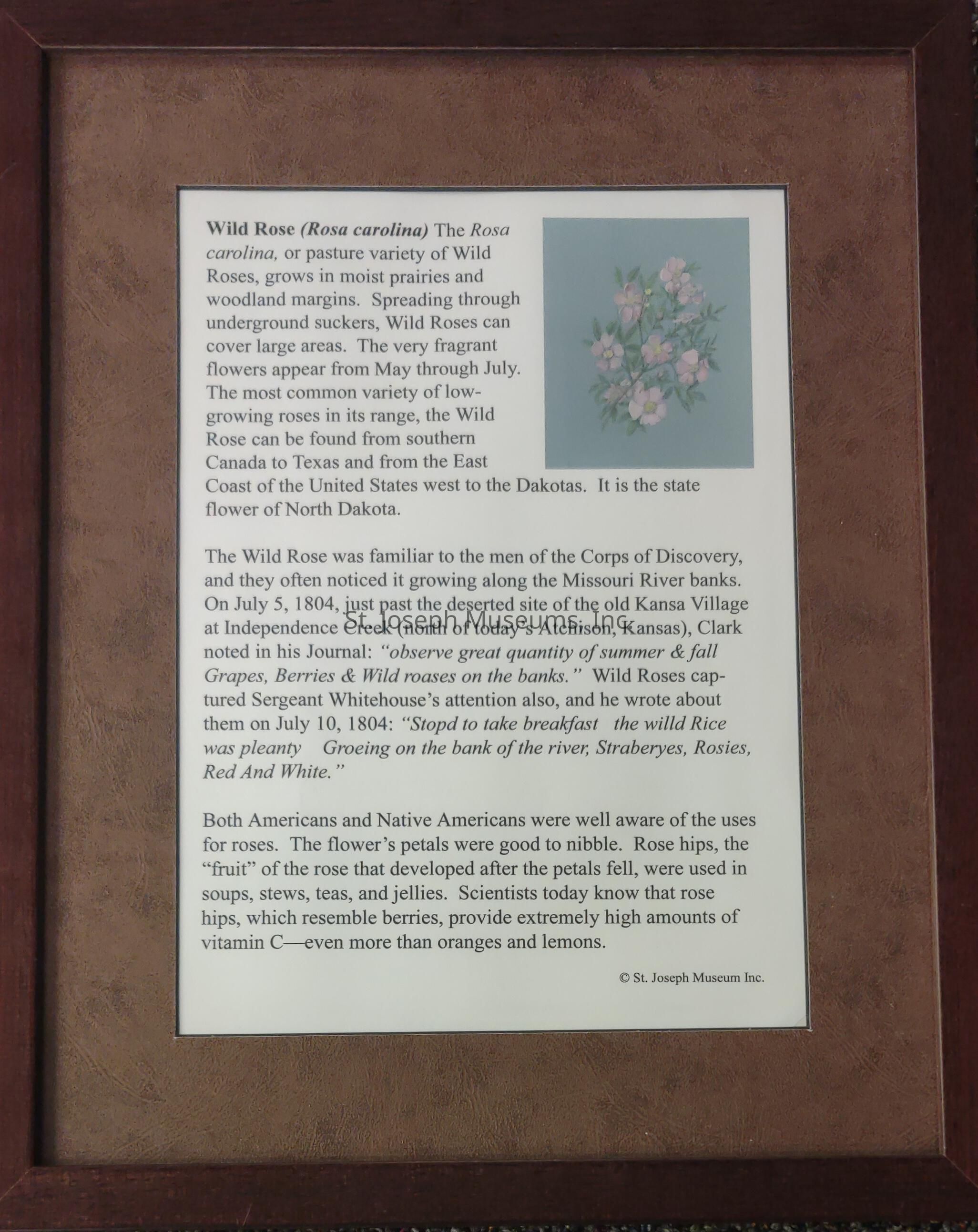Name/Title
Wild rose (Rosa carolina)Entry/Object ID
2021.1.24 BScope and Content
Wild rose (Rosa carolina) plant description, framed.
The Rosa carolina, or pasture variety of Wild Roses, grows in moist prairies and woodland margins. Spreading through underground suckers, Wild Roses can cover large areas. the very fragrant flowers appear from May through July. the most common variety of low-growing roses in its range, the Wild Rose can be found from southern Canada to Texas and from the East Coast of the United States west to the Dakotas. It is the state flower of North Dakota.
The Wild Rose was familiar to the men of the Corps of Discovery, and they often noticed it growing along the Missouri River banks. On July 5, 1804, just past the deserted site of the old Kansa Village at Independence Creek (north of today's Atchison, Kansas), Clark noted in his Journal; "observe great quantity of summer and fall Grapes, Berries, & Wild roases on the banks." Wild Roses captured Sergeant Whitehouse's attention also, and he wrote about them on July 10, 1804; "Stopd to take breakfast the wild Rice was pleanty Groeing on the bank of the river, Strberyes, Rosies, Red And White."
Both Americans and Native Americans were well aware of the uses for roses. The flower's petals were good to nibble. Rose hips, the "fruit" of the rose that developed after the petals fell, were used in soups, stews, teas, and jellies. Scientists today know that rose hips, which resemble berries, provide extremely high amounts of vitamin C - even more than oranges and lemons.Context
Originally designed by the St. Joseph Museum in the fall of 2004. Titled "Botanical Wonders of the Uncharted West. The Recorded Flora of the Lewis & Clark Expedition."Collection
Lewis and ClarkLexicon
LOC Thesaurus for Graphic Materials
Botanical drawings, Expeditions & surveysArchive Items Details
Title
Wild rose (Rosa carolina)Creator
Mary L. FletcherDate(s) of Creation
2004Subjects
Plants, Watercolor paintingsParts
Count
2Parts
Watercolor of plant and descriptive label, both framed.Condition
Overall Condition
Very GoodProvenance
Notes
"Botanical Wonders of the Uncharted West" visually depicts how well Lewis followed Jefferson's instructions. In recognition of this achievement, The S. Joseph Museums, Inc. commissioned accomplished artist Mary Fletcher to create fifty (50) selected paintings of flora documented by the Corps during their Journey. These framed watercolor originals are accompanied by similarly framed labels, generated by former Head of Research Jackie Lewin, which describe the corresponding plants with appropriate quotations from the Journals. This collection makes available for study and appreciation plants that were new to Lewis and Clark, but which Native Peoples already recognized as valuable sources of food, medicine, and tools. Some of these still remain a mystery to many, but all will enjoy their beauty, their diverse uses, and their accomplished renderings.
